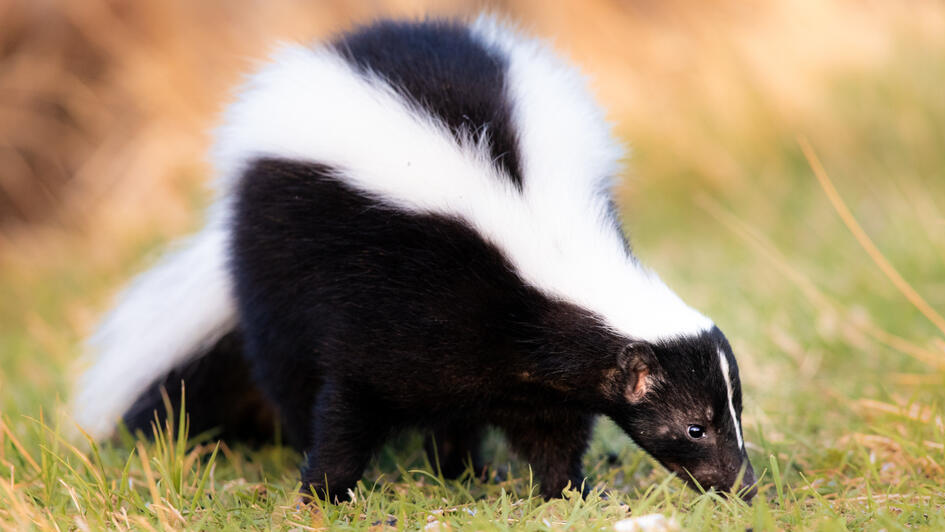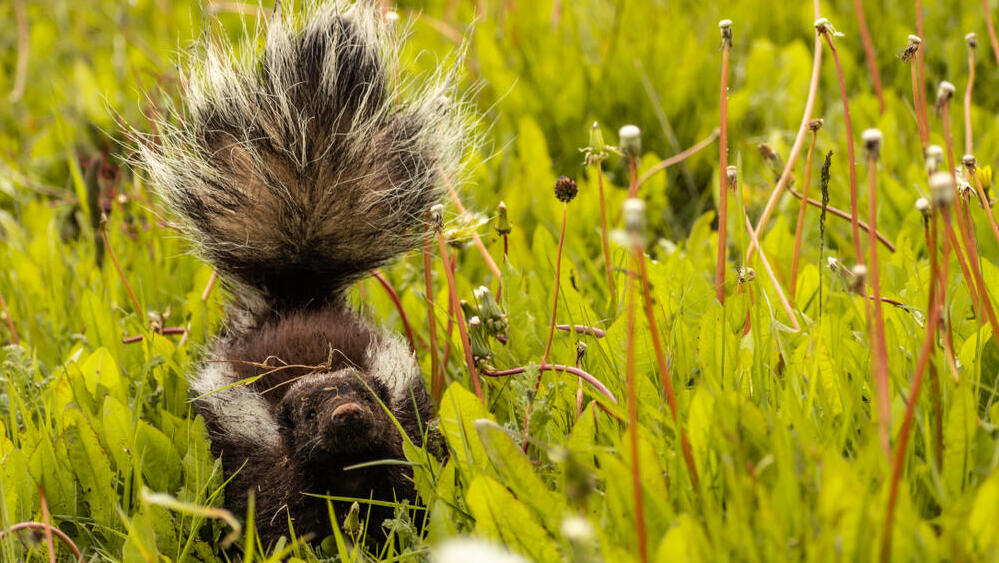Getting your Trinity Audio player ready...
The skunk is primarily known for the foul-smelling liquid it sprays at predators when in danger, as well as for its black-and-white coloration. In 2005, however, the Israel Police began developing a crowd dispersal tool it called skunk, thereby associating the name with a non-lethal but unpleasant form of riot control
The skunk was first used in 2008, during protests by left-wing activists and Palestinians against the construction of the West Bank barrier wall. In 2009, the skunk also came into use by IDF forces in the West Bank.
The animal’s most well-known feature is its well-developed scent glands, which it uses as a defensive mechanism. Two glands located in its anus produce a mixture of chemical substances (1-2 ml) that include a stinky sulfur compound, which skunks can spray to a distance of about 2-3 meters. In addition to the unpleasant smell, the substance isn’t water-soluble (making it difficult to wash off) and can cause irritation and even temporary blindness if hitting exposed eyes.
"When attacked, the skunk turns its back to the predator and sprays the foul-smelling secretion. Some species even stand on their front legs while spraying the stinky substance from their bodies, which takes a few days to regenerate," explained Prof. Eli Geffen from Tel Aviv University’s George S. Wise Faculty of Life Sciences.
"In fact, a skunk can spray the substance several times, as its spray sacs don’t empty after one discharge, despite the fact a single spray is often enough to provide the skunk the time it needs to escape its predator."
"Unlike the substance composition sprayed by the animal, there’s almost no available information about what the riot control substance is composed of, except that it’s an aqueous solution of yeast and baking soda, where the yeast creates heavy-smelling amino acids,” said Prof. Shlomo Magdassi from the Hebrew University of Jerusalem’s Institute of Chemistry and the Casali Center for Applied Chemistry
"Assuming that the odor-causing agents in the police skunk are indeed amino acids, there are two such acids responsible for creating the foul smell: Methionine and Cysteine, although I’ll add there may be other or additional substances in the skunk contributing to its foul odor."
He said that the substance was tested in the laboratory. "In our tests we indeed found a solution of these two amino acids, even combined with baking soda-like substances, has a terrible smell," he said.
Before using their substance on protesters, Magdassi said the authorities must publish the substance’s MSDS (Material Safety Data Sheet) which contains information about specific properties, including instructions for handling or working with them, their physical characteristics (melting point, boiling point, and flash point), toxicity, health effects, storage requirement, transport, disposal procedures, and spill-handling procedures.
"The information should be accessible to everyone. Otherwise, spraying any unknown substance could lead to severe health repercussions," Prof. Magdassi said.




